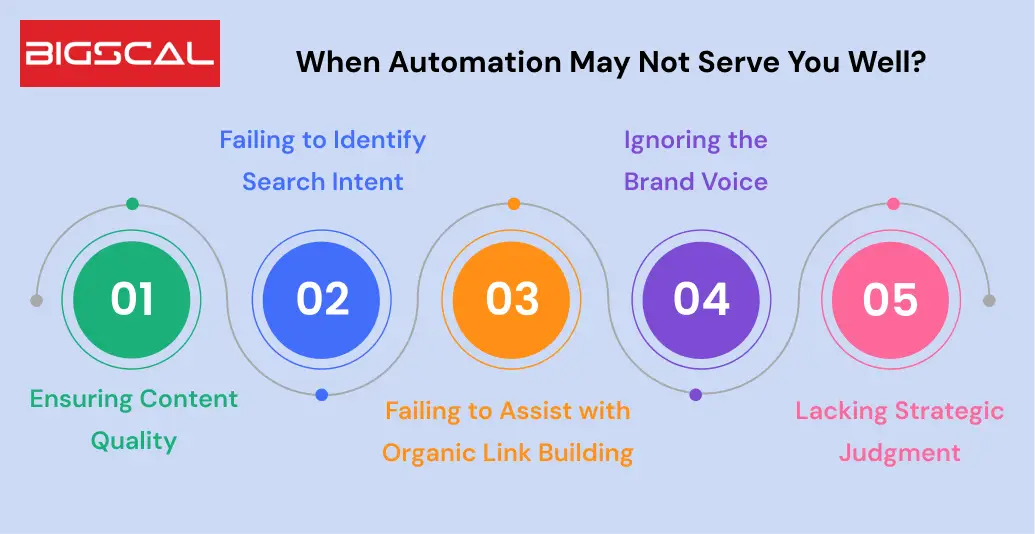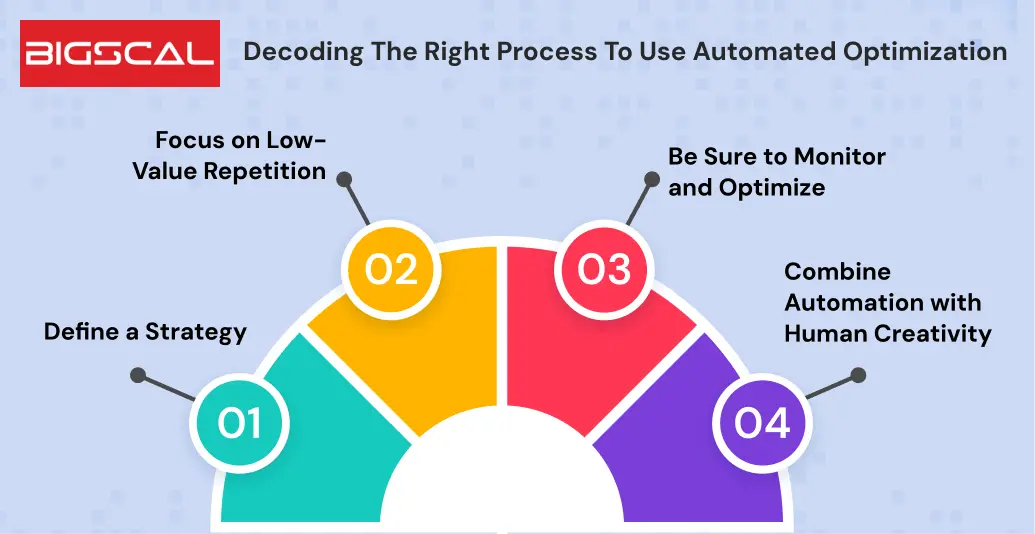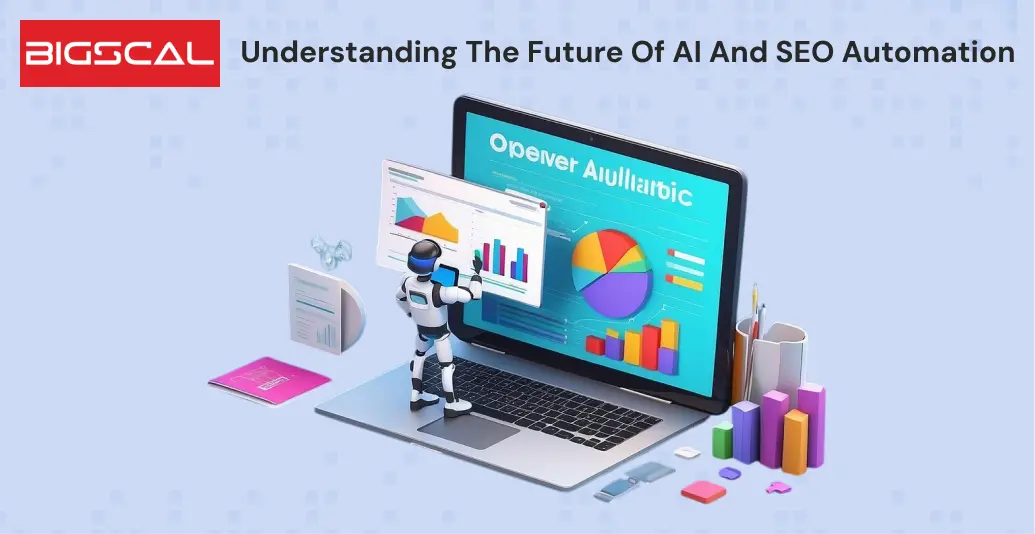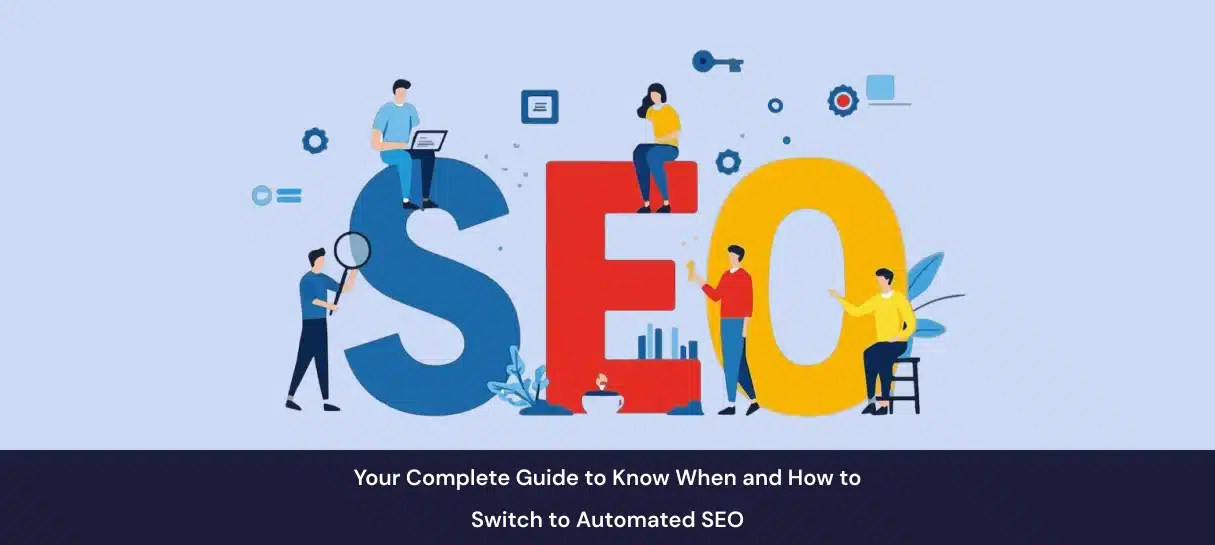Your Complete Guide to Know When and How to Switch to Automated SEO
Quick Summary: Can SEO be automated? It certainly can, but you must know when to use it and when to stay away from automation. Find out more about it now!
Introduction
Have you ever wondered if there is a magic button that can do all your SEO work while you concentrate on building your business? Welcome to the world of automated search engine optimization, where easy rankings and overnight success claims run rife. Rather than thinking, “Can SEO be automated?”, you need to ask yourself, “How can you distinguish the marketing hype from the actual assistance you can receive?”
The reality of automated SEO is not as clear-cut as most would have you think. In this definitive guide, we will explore exactly what automated optimization can and cannot do for your business in 2025 and beyond.
What Is Automated SEO Anyway?
Automated optimization is the application of technology and software programs to execute routine search engine optimization with little or no direct human involvement. Imagine having a virtual assistant that can execute routine, time-consuming SEO tasks, so you can focus on strategy and creativity.
Automation SEO essentially covers several concepts. It can execute technical audits that would take hours to do manually, monitor keyword positions for dozens of phrases, create reports from several data sets, and even help optimize content. Many agencies fail because they can’t find efficient means to manage multiple client campaigns without being bogged down by manual work. This is where understanding the best SEO software for agencies becomes crucial. The issue is not finding tools that claim to automate SEO—there are hundreds of them.
That is why most successful agencies spend considerable time reading and comparing review sites that rank the best SEO software. These reviews allow them to understand which tools deliver real automation and which ones simply resell core functionality with fancy dashboards. The secret is to find platforms that can actually reduce manual work while delivering the quality and customization that different client industries require.
Know When to Switch to SEO Automation
Automation is at its best where consistency, data management, and repetition are paramount. Technical Search Engine Optimization monitoring, for instance, is automation’s best friend. Software can crawl sites and detect broken links, missing meta tags, duplicate content, and site speed problems quicker and more accurately than any human can manually inspect. Using a website page speed monitor tool, you can also automate performance checks, identify bottlenecks, and ensure your site consistently loads fast across all devices. Similarly, local SEO automation can streamline tasks like citation building, review monitoring, and local ranking tracking, ensuring accuracy and efficiency at scale.
Likewise, automated SEO reports have transformed client reporting and internal monitoring. These platforms gather data from various sources, including Google Analytics, Search Console, rank tracking software, and social media sites, to build rich dashboards that refresh in real-time.
Content optimization receives strong support from automation with generative AI tools that scan top-performing pages and give very specific suggestions. Content automation for SEO translates to being able to automatically determine optimal keyword density, discover semantic keywords, suggest internal linking possibilities, and even alert you to content that is potentially too thin or duplicated.
Automated SEO software is especially strong in competitive analysis. The software can scan competitor sites, track competitive ranking changes, detect new content, and even look at the patterns around link-building—a task often handled by a professional link building agency for maximum results. Monitoring at this level would be impossible to keep up with manually, especially with multiple competitors; however, automation makes it standard and thorough.
When Automation May Not Serve You Well?

Even with dramatic improvement, automation SEO has limitations that can result in expensive errors if used carelessly. Be aware of these limitations in order to make informed decisions on where and how to implement automation for your SEO.
Ensuring Content Quality
While the AI role in content writing is huge, these articles are typically riddle with several big errors. They are generic and lack the special insights and perspectives that make content truly valuable to readers. Automated content is also lacking in the demonstration of expertise, experience, authoritativeness, and trustworthiness (E-E-A-T) that Google is becoming more focused on.
Google’s quality raters now verify whether or not content is AI-generated and even rate it as low quality, which would be catastrophic for sites that rely heavily on an inordinate amount of AI-generate content without human oversight and editing.A smart, time-saving approach is to use AI for rewriting competitor content such as with tools like the SEO Magnifier article rewriter and then manually edit it to refine the flow and accuracy. This method helps you save time while ensuring the rewritten content retains the most important and relevant points.
Failing to Identify Search Intent
Automated algorithms have a tendency to concentrate on keyword metrics without user experience and emotional intent. They may see that a keyword has a great search volume and suggest without taking into account that the intent of the keyword is not fulfilling business objectives or the target market’s needs.
Failing to Assist with Organic Link Building
Automated systems usually cannot estimate the true authority, relevance, or safety of potential link sources.That’s why relying on human oversight and proven link building tips from experienced seo agencies like Marketing Lad or a best rated link building agency for b2b or SaaS is crucial to ensure quality backlinks. The consequences of automated link-building mistakes can be severe and long-lasting.Sites can receive manual penalties that will take months of cleanup work and disavowal processes.
Ignoring the Brand Voice
Although AI may be able to replicate different writing styles to some extent, it is impossible to replicate the subtlety, personality, and original voice that differentiate brands. What this does is produce technically optimize content lacking the personality and authenticity that is essential for building real relationships with people.
Lacking Strategic Judgment
Automated SEO software excels at following pre-set rules and structures, but is incapable of making the subtle choices that successful SEO demands a critical limitation often faced by software development companies seeking to optimize complex websites and digital products They are unable to consider the long-term brand consequences of short-term ranking strategies or know when to forgo some optimization for usability or brand continuity.
Moreover, when algorithmic adjustments take place or competitive situations change quickly, human planners or a trusted best seo reseller are able to quickly modify their strategies, which automated systems just can’t do.
Decoding the Right Process to Use Automated Optimization

Step 1: Define a Strategy
Begin by defining precise strategic objectives and success metrics. Do an in-depth audit of your existing SEO procedures to understand what tasks are good candidates for automation. Manually map the customer journey and user intent patterns before automating.
Step 2: Focus on Low-Value Repetition
Start with technical monitoring and reporting tasks for automation. There is the greatest return on investment in automation in these categories because they’re labor-intensive, need frequent execution, and have well-defined success metrics. Do automated keyword research and competitive tracking as your second wave. Use automation for initial content optimization recommendations, but never for final content decisions.
Step 3: Be Sure to Monitor and Optimize
Subject all automated output to necessary human review processes. This is particularly relevant to content creation, where AI can produce technically accurate but strategically awry content. You must also use data validation methods to validate automated insights and conduct recurring audits of automated processes to make sure that they remain in line with your strategy.
Step 4: Combine Automation with Human Creativity
Create processes that utilize automation for identifying data and humans for strategic decisions. For instance, apply automated solutions to find content gaps and trending topics, but apply human brainpower to decide which opportunities fit business objectives and how to pursue them in a creative manner. Don’t forget to create feedback loops between automated and human control.
Identifying SEO Red Flags to Ensure Automation Success
Identifying the warning signs is important to maintain your search rankings. Negative and meaningless automation can result in penalties, traffic loss, and long-term harm to your online reputation. Knowing the warning signs can prevent you from committing expensive mistakes that may take years or months to correct.
Some significant warning signs show that automated SEO can do more harm than good:
- AI-powered mass content generation: Having hundreds of pages generated overnight by AI tools leads to thin, copied content that adds little value to the user, which eventually triggers Google’s quality detection mechanisms and penalties.
- Over-optimization of keywords: Overuse of automated software to artificially optimize keywords in content, following old methodology that current search engines actively penalize, can hurt.
- Link building schemes automation: Algorithms that create links from low-quality directories, comment spam, or paid networks can be easily identified by search engines and severely penalized,always focus on earning high-quality backlinks instead.
- Automated reporting with no context: Just using automated reporting and no human interpretation, resulting in making strategy decisions based on incomplete or misread information
- Brand voice abandonment: Focusing more on automated technical tuning at the expense of brand voice by creating content that gets good rankings but does not establish authority and trust is not a good idea.
The biggest automated SEO optimization error is doing it as a full SEO solution instead of as a supporting tool. Companies including those using white label SEO services that try to automate every part of their SEO plan without any human input may see short-term gains but ultimately face catastrophic long-term outcomes and significant performance decline.
Understanding the Future of AI and SEO Automation

If you follow the latest technology news, you’ll realize that AI is here to stay. As SEO continues to develop, the optimal approach will combine artificial intelligence with human discernment and not allow one to dominate the other. Currently, almost half of all marketers employ AI-based SEO tools to simplify workflows, and an even greater percentage use these tools to identify emerging trends. For example, many Shopify store owners use a Shopify SEO automation app like SEOpilot AI for their large stores with hundreds of thousands of products to automatically optimize meta tags, page speed insight, and generate keyword-rich content—saving hours of manual work while boosting organic traffic.
Key developments shaping SEO’s future include:
- Predictive SEO insights: Anticipating what will be in trend, AI enables businesses to develop content in advance rather than retrospectively.
- Real-time personalization: Automation can change page designs, calls-to-action, and content dynamically according to each visitor’s actions, increasing engagement and rankings.
- Visual and voice search at scale: With ever-more search happening by voice or image, workflows now facilitate conversational search and multimedia content natively.
- No-code environments and AI integration: Automated tools are made simpler to allow non-technical personnel to develop sophisticate processes, and business intelligence powered by AI links server performance to search visibility in real time.
Conclusion
After delving into the potential of automation for SEO, one reality stands out: the human factor is still priceless when it comes to creating truly effective SEO strategies. Take this simple mantra to heart: your SEO strategy should be assisted by automation, not dictate by it. The most effective SEO automation deployments are those in which human beings are still very much in control, leveraging technology to carry out their vision more effectively than by letting technology drive their strategy.





